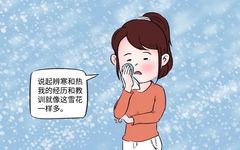Click on “Yang Baba” above to follow us Recently, with the change of seasons, the number of sick children has suddenly increased.Many mothers use medication or dietary therapy and massage, but without much effect. In fact, a large part of the reason is that they still cannot distinguish between cold and heat, or do not distinguish at all.Let me share a lesson from my own hasty experience in distinguishing cold and heat.A few years ago, during one winter, I had a fever. The cause was the office air conditioning being quite warm, and I was dressed lightly, but due to work, I had to go in and out, feeling hot and cold. The next day, I developed a fever.At that time, my fever was quite high, over 39°C, and I felt a bit cold. For adults, such a high temperature in winter can feel a bit chilly regardless of cold or heat, but I was feeling so uncomfortable that I didn’t properly assess my condition and casually took a packet of wind-cold cold medicine, trying to sweat it out. Unexpectedly, I woke up with a fever over 40°C, feeling completely dizzy.Using wind-heat medicine incorrectly led to high fever and fluid deficiency, with heat accumulating in the heart and spleen, causing palpitations and difficulty breathing, and a ring of red swollen blisters appeared around my mouth. The palpitations were particularly uncomfortable, so I quickly made some red date and licorice tea to nourish and generate fluids, and felt much better after drinking it.Then I reassessed: my tongue was red with a yellow coating, the tongue body was dry, my urine was short and red, and the high fever persisted. I checked my pulse, which was rapid but strong, indicating that there was clearly heat both externally and internally. After much effort, I finally managed to recover.Initially, it was just a simple wind-heat exterior cold, which could have been treated with some simple pungent cool exterior-releasing herbs, but because I mistakenly used wind-cold medicine, it triggered a series of unnecessary complications. If a child or an elderly person used the wrong medicine, it could be even more serious.So what should we do at the first sign of an external pathogen? I believe one important point is to distinguish between cold and heat.Before distinguishing cold and heat, ask yourself these questionsMany mothers easily fall into a misconception that the distinction between cold and heat is very absolute, for example: believing that clear nasal discharge indicates cold, while yellow nasal discharge indicates heat. In reality, a single symptom usually cannot determine cold or heat; it needs to be viewed comprehensively.
Recently, with the change of seasons, the number of sick children has suddenly increased.Many mothers use medication or dietary therapy and massage, but without much effect. In fact, a large part of the reason is that they still cannot distinguish between cold and heat, or do not distinguish at all.Let me share a lesson from my own hasty experience in distinguishing cold and heat.A few years ago, during one winter, I had a fever. The cause was the office air conditioning being quite warm, and I was dressed lightly, but due to work, I had to go in and out, feeling hot and cold. The next day, I developed a fever.At that time, my fever was quite high, over 39°C, and I felt a bit cold. For adults, such a high temperature in winter can feel a bit chilly regardless of cold or heat, but I was feeling so uncomfortable that I didn’t properly assess my condition and casually took a packet of wind-cold cold medicine, trying to sweat it out. Unexpectedly, I woke up with a fever over 40°C, feeling completely dizzy.Using wind-heat medicine incorrectly led to high fever and fluid deficiency, with heat accumulating in the heart and spleen, causing palpitations and difficulty breathing, and a ring of red swollen blisters appeared around my mouth. The palpitations were particularly uncomfortable, so I quickly made some red date and licorice tea to nourish and generate fluids, and felt much better after drinking it.Then I reassessed: my tongue was red with a yellow coating, the tongue body was dry, my urine was short and red, and the high fever persisted. I checked my pulse, which was rapid but strong, indicating that there was clearly heat both externally and internally. After much effort, I finally managed to recover.Initially, it was just a simple wind-heat exterior cold, which could have been treated with some simple pungent cool exterior-releasing herbs, but because I mistakenly used wind-cold medicine, it triggered a series of unnecessary complications. If a child or an elderly person used the wrong medicine, it could be even more serious.So what should we do at the first sign of an external pathogen? I believe one important point is to distinguish between cold and heat.Before distinguishing cold and heat, ask yourself these questionsMany mothers easily fall into a misconception that the distinction between cold and heat is very absolute, for example: believing that clear nasal discharge indicates cold, while yellow nasal discharge indicates heat. In reality, a single symptom usually cannot determine cold or heat; it needs to be viewed comprehensively.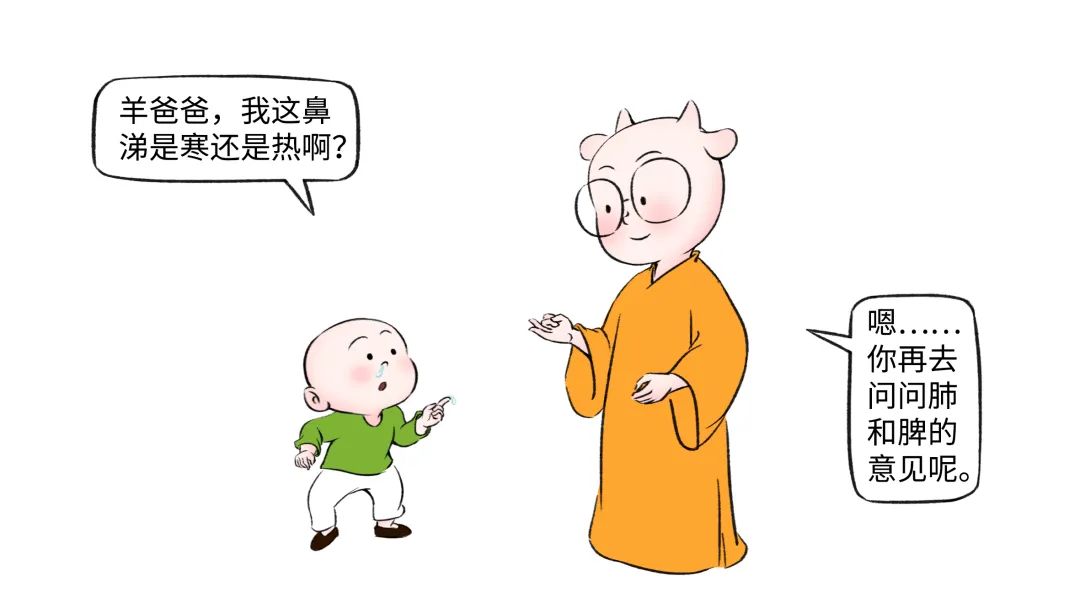 For example, if a child has clear nasal discharge but also has short and red urine, a sore throat, red spots on the tongue coating, and a strong desire to drink cold water with a good appetite, this situation likely indicates only a slight exterior cold, similar to a cold with heat, while more evidence points to an internal heat issue. In this case, one should not simply use warming yang and dispersing cold methods, but should clear the internal heat while dispersing the exterior cold.Yellow nasal discharge is the same; it does not mean that yellow nasal discharge can be definitively classified as a heat syndrome, leading to hastily using a bunch of heat-clearing dietary therapies or medicines.Before distinguishing cold and heat, you can ask yourself a few questions:1. Is this nasal discharge yellow all day, or only in the morning? If it is only yellow in the morning and clear the rest of the time, it only indicates that the yellow nasal discharge in the morning is due to overnight retention, and does not definitively represent a heat syndrome.2. Where is the heat from that the yellow nasal discharge represents? Is it from wind-heat binding the exterior, or is it due to internal accumulation of food and heat? If it is wind-heat binding the exterior, then more pungent cool exterior-releasing methods should be used. If it is internal heat, then if there is food accumulation, it should be cleared, and if there are other types of stagnant heat, it can also be cleared. The treatment approach will differ.Therefore, if one blindly treats clear nasal discharge as cold and yellow nasal discharge as heat, the results are often not good, or may lead to more problems.Distinguishing cold and heat requires a comprehensive viewSince a single symptom cannot be judged, we need to consider the child’s eating, drinking, urination, defecation, sleep, emotions, tongue coating, and other aspects comprehensively.For example, in terms of eating, a sudden strong appetite for cold foods may indicate heat; a decreased appetite, preferring warm foods, and difficulty digesting may generally indicate cold.However, this single aspect of eating can only represent local cold and heat; we need to extract points from other aspects such as drinking, urination, defecation, sleep, sweating, emotions, tongue coating, etc., to see the overall trend of cold or heat, and then proceed with treatment. By sorting through this, the general direction will not be wrong.If you really cannot distinguish cold and heat, what should you do?Use these 4 tipsMany mothers are confused; they seem to understand the theory, but when they see it, they can do it, but when they actually encounter it, they still cannot distinguish. Indeed, children’s conditions change rapidly, and often cold and heat are mixed, making it unclear. Here are a few thoughts I commonly use in practice:1. If cold and heat are unclear, first choose external treatment methods that do not require strict differentiationFor example, in the early stages of wind-cold and wind-heat colds, symptoms may be mild, with both fever and chills, and cough with indistinct tongue coating. In this case, some massage techniques can be used, such as acupoints for releasing the exterior, like opening the Tianmen (Heavenly Gate), pushing the Kangu (Palace of the Kidney), rubbing the Taiyang (Sun), and wiping the Fengchi (Wind Pool), which can be used for both cold and heat. Additionally, back scraping along the Du meridian and Bladder meridian can also be effective.
For example, if a child has clear nasal discharge but also has short and red urine, a sore throat, red spots on the tongue coating, and a strong desire to drink cold water with a good appetite, this situation likely indicates only a slight exterior cold, similar to a cold with heat, while more evidence points to an internal heat issue. In this case, one should not simply use warming yang and dispersing cold methods, but should clear the internal heat while dispersing the exterior cold.Yellow nasal discharge is the same; it does not mean that yellow nasal discharge can be definitively classified as a heat syndrome, leading to hastily using a bunch of heat-clearing dietary therapies or medicines.Before distinguishing cold and heat, you can ask yourself a few questions:1. Is this nasal discharge yellow all day, or only in the morning? If it is only yellow in the morning and clear the rest of the time, it only indicates that the yellow nasal discharge in the morning is due to overnight retention, and does not definitively represent a heat syndrome.2. Where is the heat from that the yellow nasal discharge represents? Is it from wind-heat binding the exterior, or is it due to internal accumulation of food and heat? If it is wind-heat binding the exterior, then more pungent cool exterior-releasing methods should be used. If it is internal heat, then if there is food accumulation, it should be cleared, and if there are other types of stagnant heat, it can also be cleared. The treatment approach will differ.Therefore, if one blindly treats clear nasal discharge as cold and yellow nasal discharge as heat, the results are often not good, or may lead to more problems.Distinguishing cold and heat requires a comprehensive viewSince a single symptom cannot be judged, we need to consider the child’s eating, drinking, urination, defecation, sleep, emotions, tongue coating, and other aspects comprehensively.For example, in terms of eating, a sudden strong appetite for cold foods may indicate heat; a decreased appetite, preferring warm foods, and difficulty digesting may generally indicate cold.However, this single aspect of eating can only represent local cold and heat; we need to extract points from other aspects such as drinking, urination, defecation, sleep, sweating, emotions, tongue coating, etc., to see the overall trend of cold or heat, and then proceed with treatment. By sorting through this, the general direction will not be wrong.If you really cannot distinguish cold and heat, what should you do?Use these 4 tipsMany mothers are confused; they seem to understand the theory, but when they see it, they can do it, but when they actually encounter it, they still cannot distinguish. Indeed, children’s conditions change rapidly, and often cold and heat are mixed, making it unclear. Here are a few thoughts I commonly use in practice:1. If cold and heat are unclear, first choose external treatment methods that do not require strict differentiationFor example, in the early stages of wind-cold and wind-heat colds, symptoms may be mild, with both fever and chills, and cough with indistinct tongue coating. In this case, some massage techniques can be used, such as acupoints for releasing the exterior, like opening the Tianmen (Heavenly Gate), pushing the Kangu (Palace of the Kidney), rubbing the Taiyang (Sun), and wiping the Fengchi (Wind Pool), which can be used for both cold and heat. Additionally, back scraping along the Du meridian and Bladder meridian can also be effective.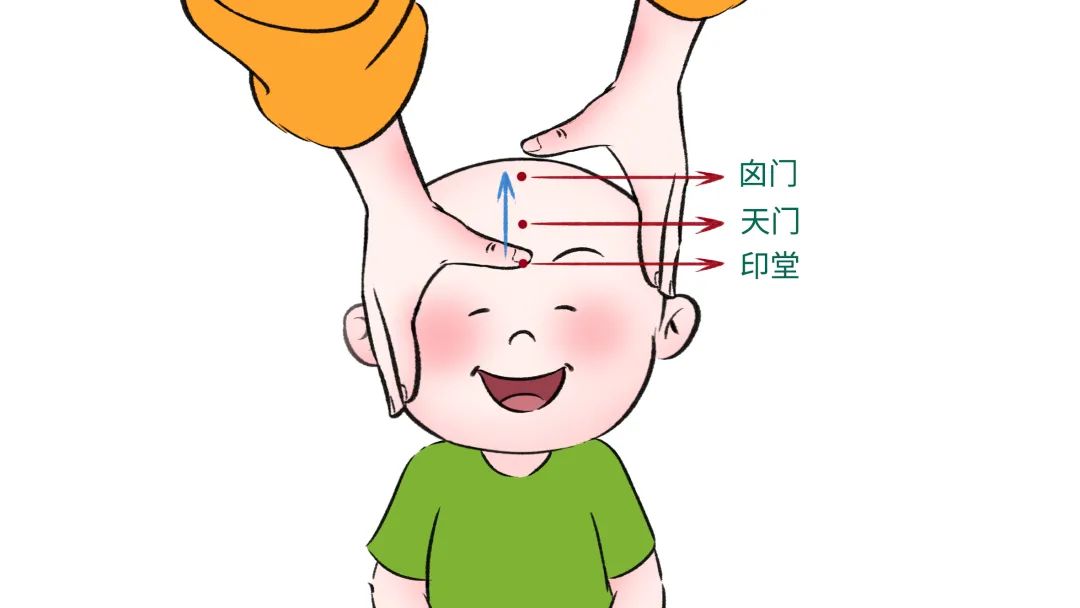 Opening the TianmenThose who have learned meridians and guasha should have more acupoint options. These methods have a bidirectional regulating effect; regardless of whether the external pathogen is cold or heat, giving the evil qi a pathway is always correct. Just be careful not to force the pursuit of sweating or bruising, as it can easily lead to overdoing it.
Opening the TianmenThose who have learned meridians and guasha should have more acupoint options. These methods have a bidirectional regulating effect; regardless of whether the external pathogen is cold or heat, giving the evil qi a pathway is always correct. Just be careful not to force the pursuit of sweating or bruising, as it can easily lead to overdoing it.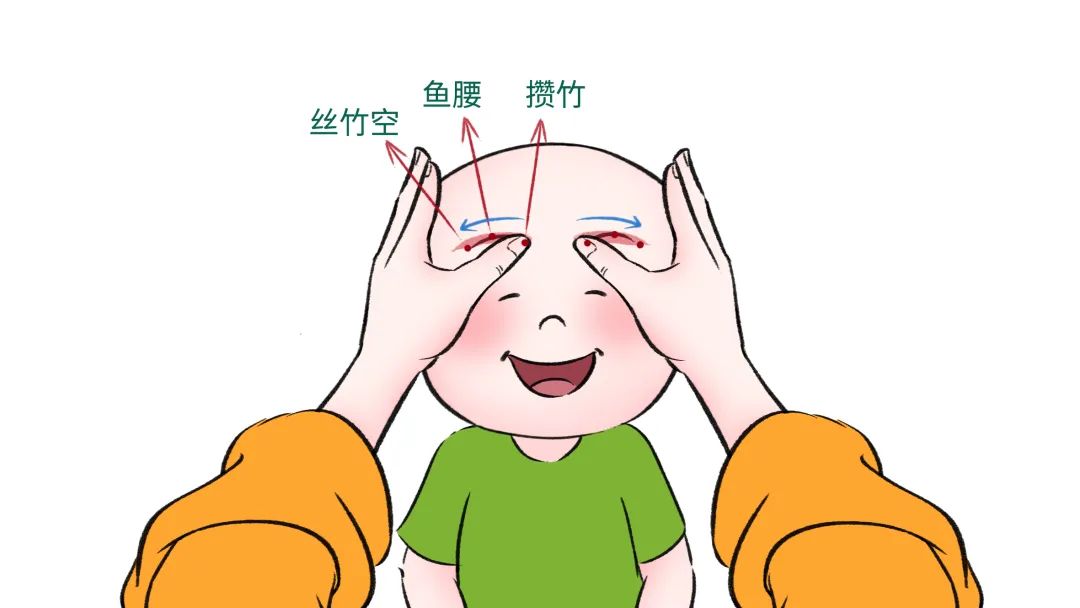 Pushing the Kangu2.Testing method: choose foods or medicines with mild propertiesIf you really cannot distinguish cold and heat, do not blindly choose foods with strong properties. You can use some neutral foods to observe while using them; even if you use the wrong ones, it won’t cause major issues. For example, if there is an external pathogen causing fever and chills without sweating, we can use some Jingjie (Schizonepeta) or Chaihu (Bupleurum), which can generally be used for both cold and heat, to make a foot soak, releasing the exterior and activating qi and blood, rather than choosing Ai Ye (Mugwort) or Sheng Jiang (Fresh Ginger), which have clear warming and dispersing cold effects.In dietary therapy, do not immediately use ginger and brown sugar water; you can simply give them some hot porridge, using the heat of the porridge to induce a bit of sweat. If after drinking the hot porridge they sweat and the fever subsides, it indicates that the external pathogen may be cold, and further dispersing the cold can be done.3. In cases of both cold and heat, focus on distinguishing where the cold and heat areThis step is suitable for mothers with some TCM knowledge. The complexity of mixed cold and heat situations mainly arises from not being able to distinguish where the cold and heat come from. This means further distinguishing between exterior and interior.For example, if a child has a fever and clear nasal discharge, accompanied by a thick tongue coating, bad breath, sore throat, hard dry stools, and eye discharge, although this heat belongs to a type of internal heat, it may come from stagnation in the middle burner. We only need to clear the stagnation to naturally clear the heat.However, if there is no obvious stagnation but there is a cough with yellow phlegm, a red tongue, and clear nasal discharge, then this heat also belongs to the interior and can be treated with some herbs that clear internal heat, such as Huangqin (Scutellaria) and Lianqiao (Forsythia).But if there is also clear nasal discharge on the exterior, we can add some herbs that disperse exterior cold, such as Zisu (Perilla) and Cong Bai (Scallion).In other words, being able to further distinguish cold and heat between exterior and interior and treating them separately can resolve many previous confusions. Of course, this step requires more support from TCM knowledge.4. In cases where the child’s condition is mild, first observeIf you really cannot figure it out, there is one last method: observation.When unsure, do not blindly intervene; carefully observe the child’s eating, drinking, urination, defecation, and sleep. A light diet does not harm, and is the best approach. Initial symptoms may not be very clear, but will gradually become clearer. For example, if the tongue coating is relatively delayed, it may manifest more clearly the next day, making it easier to distinguish cold and heat.Also, pay attention to the child’s mental state, which is an important indicator of the severity of the illness. If there is a significant decline in mental state, regardless of whether the symptoms seem severe, medical attention should be sought promptly.I hope these insights help everyone, and may every child avoid incorrect treatments as much as possible.Text | He XiaomiaoEditor | ZhuziProofreader | YeziIllustration | Jasmine Red & Alaya VijnanaAuthor Bio: He Xiaomiao, a TCM enthusiast born in the 90s, has a five-year-old daughter, a practitioner of TCM parenting, savoring life through TCM.Related ReadingFor colds with mixed cold and heat, try this bowl of sweet soup to dispel external cold and resolve internal heatThe first step in handling a cold: observe cold and heat, and check for food accumulation
Pushing the Kangu2.Testing method: choose foods or medicines with mild propertiesIf you really cannot distinguish cold and heat, do not blindly choose foods with strong properties. You can use some neutral foods to observe while using them; even if you use the wrong ones, it won’t cause major issues. For example, if there is an external pathogen causing fever and chills without sweating, we can use some Jingjie (Schizonepeta) or Chaihu (Bupleurum), which can generally be used for both cold and heat, to make a foot soak, releasing the exterior and activating qi and blood, rather than choosing Ai Ye (Mugwort) or Sheng Jiang (Fresh Ginger), which have clear warming and dispersing cold effects.In dietary therapy, do not immediately use ginger and brown sugar water; you can simply give them some hot porridge, using the heat of the porridge to induce a bit of sweat. If after drinking the hot porridge they sweat and the fever subsides, it indicates that the external pathogen may be cold, and further dispersing the cold can be done.3. In cases of both cold and heat, focus on distinguishing where the cold and heat areThis step is suitable for mothers with some TCM knowledge. The complexity of mixed cold and heat situations mainly arises from not being able to distinguish where the cold and heat come from. This means further distinguishing between exterior and interior.For example, if a child has a fever and clear nasal discharge, accompanied by a thick tongue coating, bad breath, sore throat, hard dry stools, and eye discharge, although this heat belongs to a type of internal heat, it may come from stagnation in the middle burner. We only need to clear the stagnation to naturally clear the heat.However, if there is no obvious stagnation but there is a cough with yellow phlegm, a red tongue, and clear nasal discharge, then this heat also belongs to the interior and can be treated with some herbs that clear internal heat, such as Huangqin (Scutellaria) and Lianqiao (Forsythia).But if there is also clear nasal discharge on the exterior, we can add some herbs that disperse exterior cold, such as Zisu (Perilla) and Cong Bai (Scallion).In other words, being able to further distinguish cold and heat between exterior and interior and treating them separately can resolve many previous confusions. Of course, this step requires more support from TCM knowledge.4. In cases where the child’s condition is mild, first observeIf you really cannot figure it out, there is one last method: observation.When unsure, do not blindly intervene; carefully observe the child’s eating, drinking, urination, defecation, and sleep. A light diet does not harm, and is the best approach. Initial symptoms may not be very clear, but will gradually become clearer. For example, if the tongue coating is relatively delayed, it may manifest more clearly the next day, making it easier to distinguish cold and heat.Also, pay attention to the child’s mental state, which is an important indicator of the severity of the illness. If there is a significant decline in mental state, regardless of whether the symptoms seem severe, medical attention should be sought promptly.I hope these insights help everyone, and may every child avoid incorrect treatments as much as possible.Text | He XiaomiaoEditor | ZhuziProofreader | YeziIllustration | Jasmine Red & Alaya VijnanaAuthor Bio: He Xiaomiao, a TCM enthusiast born in the 90s, has a five-year-old daughter, a practitioner of TCM parenting, savoring life through TCM.Related ReadingFor colds with mixed cold and heat, try this bowl of sweet soup to dispel external cold and resolve internal heatThe first step in handling a cold: observe cold and heat, and check for food accumulation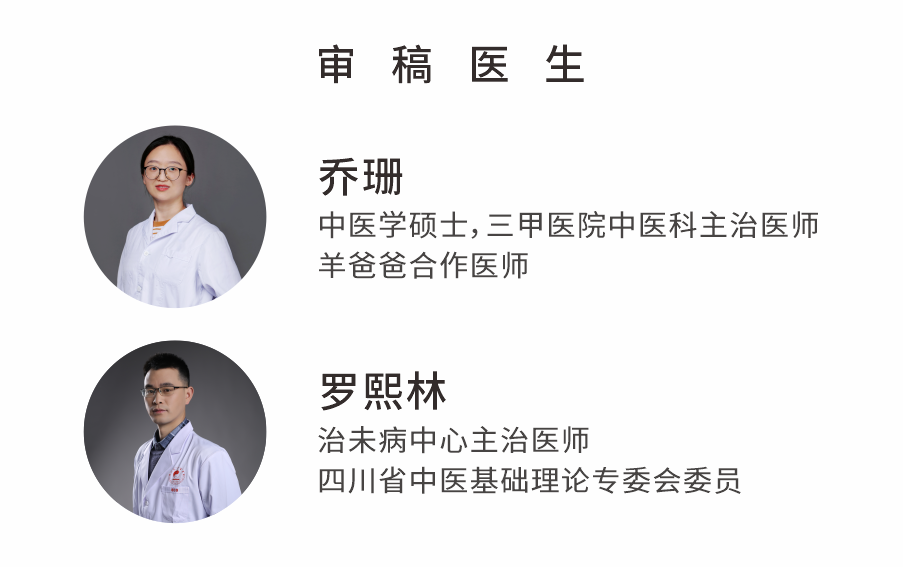
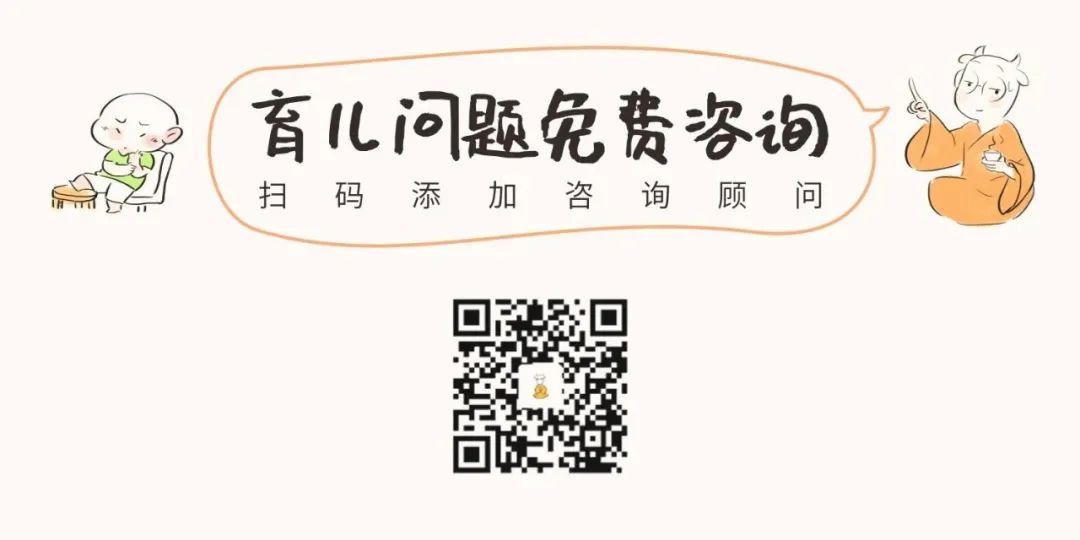
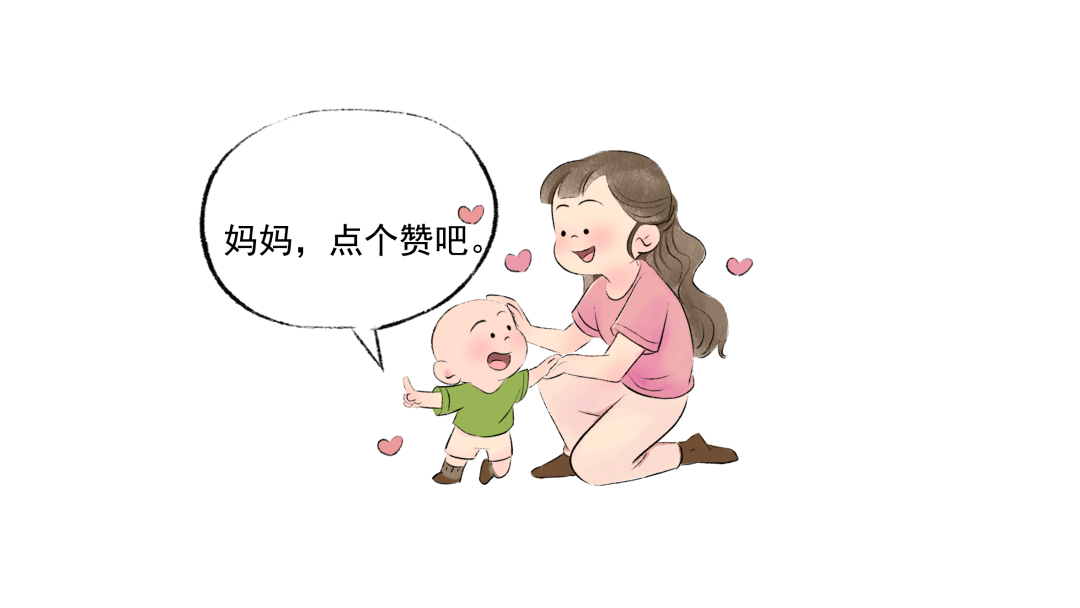 Click [Read the original text]to search for keywords and read historical articles
Click [Read the original text]to search for keywords and read historical articles
